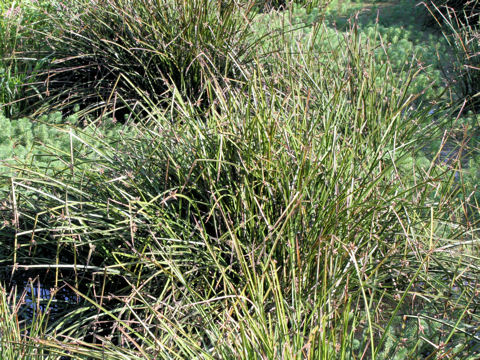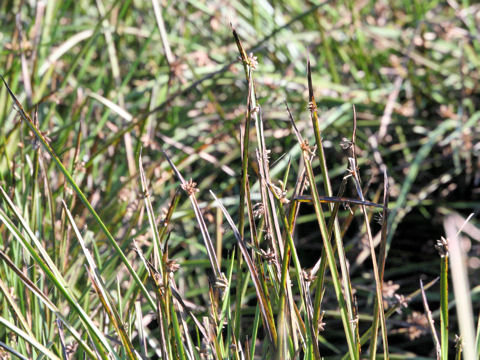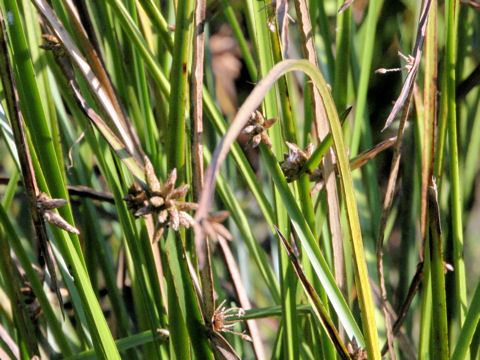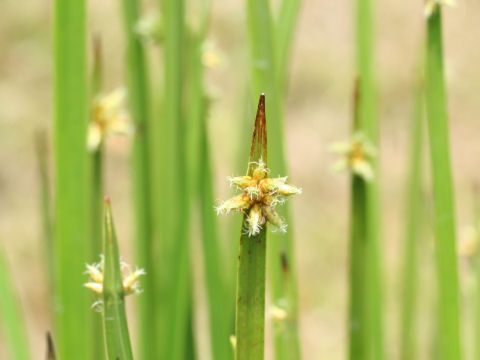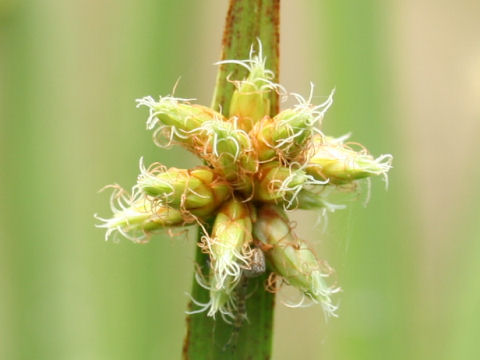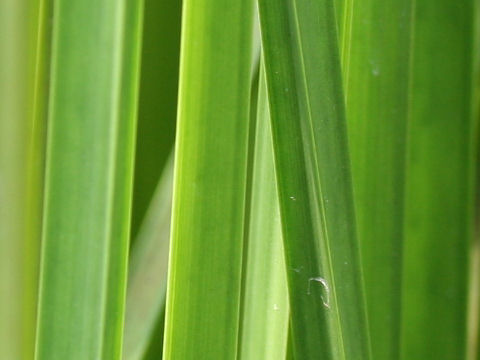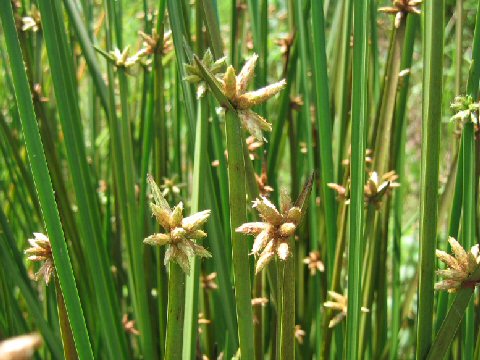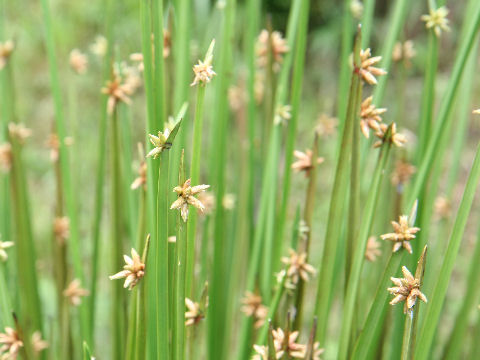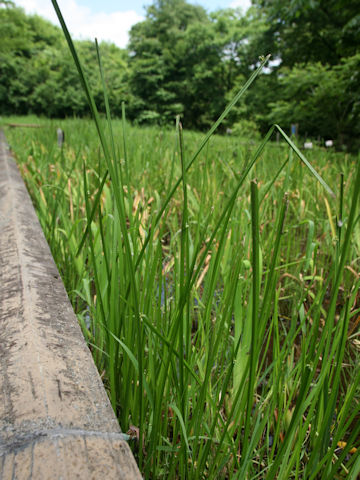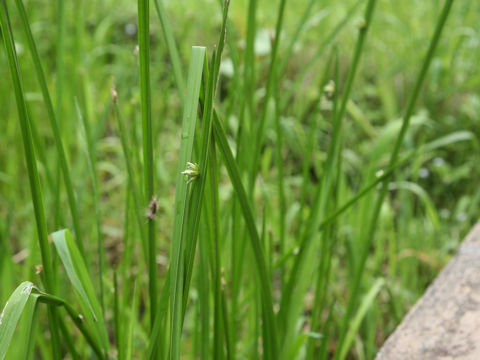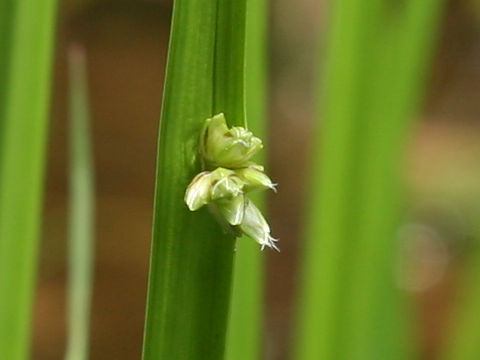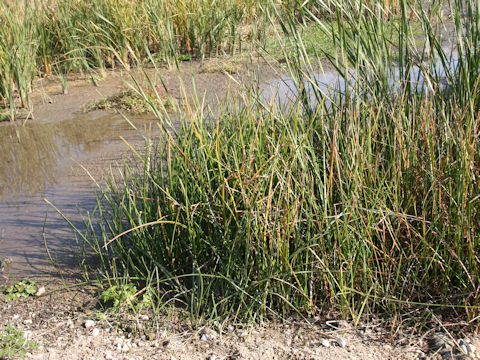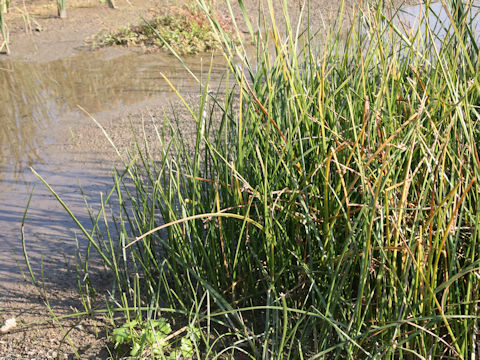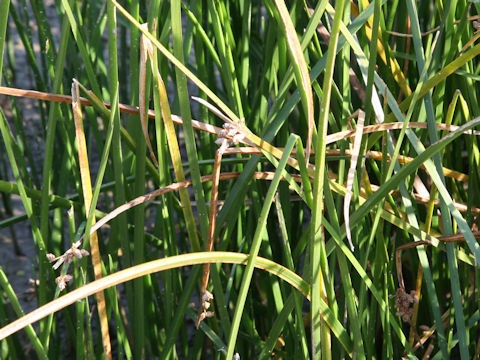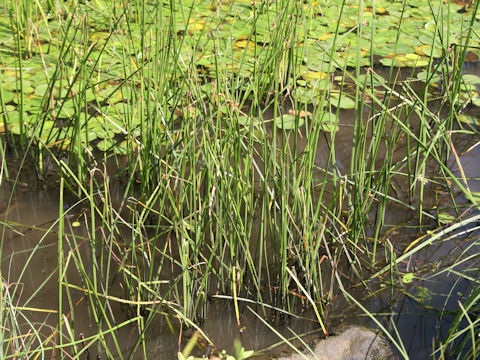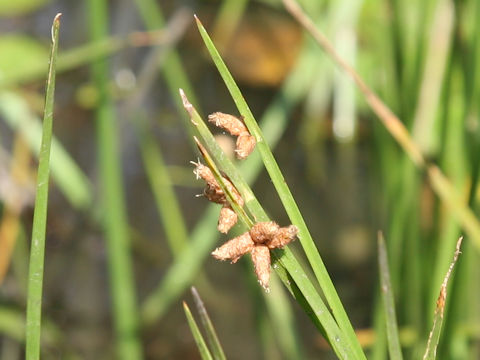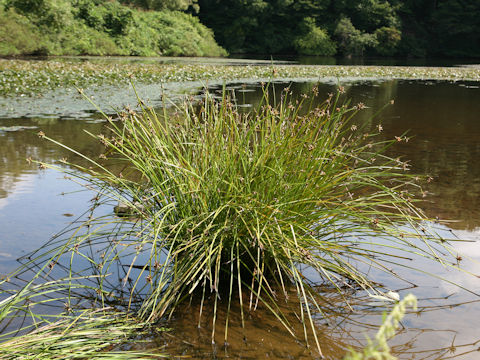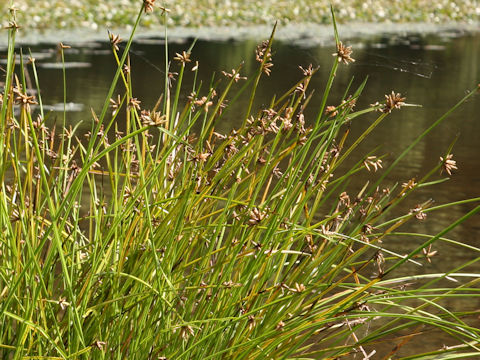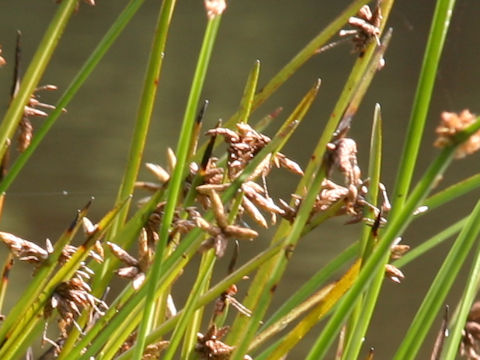
|
|
|
|
−− もっと見る(Show more)−−
−− 閉じる(Close) −−
|
|
|
|
わが国の各地をはじめ、台湾や朝鮮半島、中国それにインドネシア、インドに分布しています。湿地や沼沢地に生え、高さは1メートル以上になります。茎は3稜形で、水中の根から放射状にでます。8月から10月ごろ、淡緑色から淡褐色で長楕円形の小穂を、4〜10個横向きにつけます。和名は、枯れた茎が冬になっても残っていることから。台湾華語では「水毛花」、中国名では「水毛花(shui mao hua)」。 |
|
|
カヤツリグサ科ホタルイ属の多年草で、学名は Scirpus triangulatus (syn. Schoenoplectus mucronatus ssp. robustus)。英名はありません。 |
|
|
The "Kangare-i" (Scirpus triangulatus) belongs to Cyperaceae (the Sedge family). It is a perennial herb that ia native all over Japan, as well as Taiwan, the Korean Peninsula, China, Indonesia and India. This herb grows in bogs and marshes, and can reach up to 1 m in height. The stems are triquetrous and borne radially on the aquatic rootstocks. The spikelets are pale green to pale brown, oblong, and 4-10 spikelets are borne sideways from August to October. The dead stems remain through winter. The Japanese name "寒枯藺" comes from the fact that the withered stems remain in winter. In Taiwanese Chinese, it is "水毛花"; in Chinese, it is "水毛花" (shui mao hua). |
|
|
[上・中1〜2] 茨城県神栖市土合北にて、2009年09月10日撮影。 [中3〜中5] 大阪府交野市「大阪市大付属植物園」にて、2006年06月21日撮影。 [中6] 同上にて、2004年07月17日撮影。 [中7] 同上にて、2006年07月22日撮影。 [中8〜中10] 岩手県盛岡市繋「尾入野湿生植物園」にて、2022年06月27日撮影。 [中11〜中13] 宮城県多賀城市市川「多賀城跡」にて、2022年11月11日撮影。 [中14〜17・下] 宮城県仙台市泉区「水の森公園」にて、2024年09月10日撮影。 |

|
|
Shu Suehiro |
